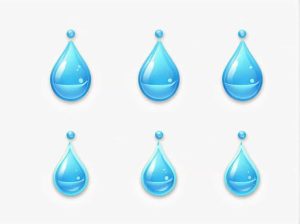Flora and fauna are essential components of the natural world. Flora refers to plants while fauna refers to animals. Together they form ecosystems that sustain life on Earth. Every region has its unique flora and fauna adapted to the climate geography and environmental conditions.
Understanding flora and fauna is crucial for biodiversity conservation and environmental sustainability. In this topic we will explore the meaning types importance and threats to flora and fauna as well as ways to protect them.
What Is Flora?
Flora refers to all plant life in a particular region or ecosystem. It includes everything from towering trees and flowering plants to microscopic algae. The term comes from the Latin word Flora the Roman goddess of flowers and plants.
Types of Flora
Flora can be classified into different categories based on habitat and function:
- Native Flora – Plants naturally found in a specific region. Example: Saguaro cactus in North America.
- Endemic Flora – Species that exist only in one place. Example: Rafflesia in Southeast Asia.
- Exotic Flora – Plants introduced from other regions. Example: Eucalyptus in many countries.
- Agricultural Flora – Plants grown for food and economic purposes. Example: Wheat rice and corn.
- Weed Flora – Unwanted plants that grow in cultivated areas. Example: Dandelions and crabgrass.
Importance of Flora
- Produces Oxygen – Plants release oxygen through photosynthesis supporting life.
- Provides Food and Medicine – Many plants are used in human diets and traditional medicine.
- Maintains Soil Health – Plant roots prevent erosion and improve soil fertility.
- Supports Wildlife – Plants serve as food and shelter for animals.
What Is Fauna?
Fauna refers to all animal life in a specific region. The term originates from Faunus the Roman god of forests and animals. Fauna includes mammals birds reptiles amphibians insects and marine creatures.
Types of Fauna
Fauna is classified based on its habitat and characteristics:
- Terrestrial Fauna – Animals that live on land. Example: Lions elephants and deer.
- Aquatic Fauna – Animals that live in water. Example: Dolphins sharks and fish.
- Avian Fauna – Birds that inhabit various regions. Example: Eagles parrots and penguins.
- Arthropods – Insects spiders and crustaceans. Example: Butterflies ants and crabs.
- Endemic Fauna – Species found only in a particular location. Example: Kangaroos in Australia.
- Extinct and Endangered Fauna – Animals that are no longer found or are at risk of extinction. Example: Dodo (extinct) Giant Panda (endangered).
Importance of Fauna
- Maintains Ecological Balance – Animals regulate ecosystems by controlling populations of other species.
- Pollination and Seed Dispersal – Birds bees and butterflies help plants reproduce.
- Food Chain Stability – Predators keep prey populations in check preventing overpopulation.
- Economic and Cultural Value – Many communities depend on animals for food work and cultural traditions.
Flora and Fauna in Different Ecosystems
1. Rainforests
- Flora: Orchids ferns mahogany trees.
- Fauna: Jaguars toucans poison dart frogs.
2. Deserts
- Flora: Cacti acacia trees desert succulents.
- Fauna: Camels scorpions fennec foxes.
3. Oceans and Seas
- Flora: Seaweed coral reefs seagrass.
- Fauna: Whales dolphins starfish.
4. Grasslands
- Flora: Tall grasses wildflowers shrubs.
- Fauna: Bison zebras lions.
5. Polar Regions
- Flora: Lichen mosses Arctic willow.
- Fauna: Polar bears penguins seals.
Threats to Flora and Fauna
1. Deforestation
The cutting down of forests destroys habitats leading to species decline. It also contributes to climate change by reducing carbon absorption.
2. Climate Change
Global warming affects plant growth and animal migration. Rising temperatures cause habitat loss for species like polar bears and corals.
3. Pollution
- Air pollution harms plants and animals.
- Water pollution kills marine life.
- Soil pollution affects plant growth and animal habitats.
4. Poaching and Illegal Wildlife Trade
Many species like tigers and rhinos are hunted for their skin horns and medicinal properties. This pushes them toward extinction.
5. Introduction of Invasive Species
Non-native species can disrupt ecosystems by competing with native species. Example: The cane toad in Australia has harmed local wildlife.
How to Protect Flora and Fauna?
1. Conservation Efforts
- Establish national parks and wildlife reserves to protect natural habitats.
- Enforce strict laws against poaching and illegal deforestation.
2. Sustainable Practices
- Use eco-friendly products to reduce pollution.
- Support sustainable farming that does not harm biodiversity.
3. Reduce Carbon Footprint
- Use renewable energy sources like solar and wind power.
- Reduce deforestation and excessive land use.
4. Wildlife Rehabilitation and Breeding Programs
Many organizations work on breeding endangered species and reintroducing them into the wild.
5. Educate and Raise Awareness
- Teach communities about the importance of conservation.
- Promote environmental education in schools and social media.
Flora and fauna are the foundation of life on Earth. They maintain ecological balance support biodiversity and provide resources essential for human survival. However threats like deforestation climate change and pollution endanger many species.
By taking conservation efforts seriously promoting sustainable practices and educating others we can protect the world’s flora and fauna for future generations. Every action counts in preserving the beauty and diversity of nature.



